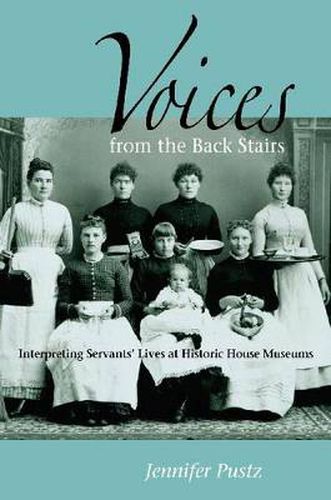Readings Newsletter
Become a Readings Member to make your shopping experience even easier.
Sign in or sign up for free!
You’re not far away from qualifying for FREE standard shipping within Australia
You’ve qualified for FREE standard shipping within Australia
The cart is loading…






Historic house museums-one of the most prevalent types of history museums in the country-have long depicted the owners of the house and their families, but representing the servants has introduced a unique set of challenges. While museum professionals have increasingly incorporated women, immigrants, African Americans, and other minorities into portrayals of the past, these portrayals often show an idealistic world without class antagonisms or ethnic conflict. Exploring the domestic conflicts that may have existed between mistress and servant often creates a more vivid and believable experience for guests.
Through her examination of the pitfalls of interpretation, Pustz offers advice for museum professionals on programming accurate and compelling depictions of those who lived their lives in the back stairs and kitchen rather than in the parlor. Based on extensive surveys of historians at historic house museums, this informative study presents examples of successful interpretation programs, including those that have made the kitchen and servants’ quarters the most popular stops on the tour. Pustz encourages museum curators to look beyond the archives of their own institution and explore other era-appropriate sources, including advertising and housekeeping guides, when trying to create a complete picture of the house’s servants, who often left behind few records.
$9.00 standard shipping within Australia
FREE standard shipping within Australia for orders over $100.00
Express & International shipping calculated at checkout
Historic house museums-one of the most prevalent types of history museums in the country-have long depicted the owners of the house and their families, but representing the servants has introduced a unique set of challenges. While museum professionals have increasingly incorporated women, immigrants, African Americans, and other minorities into portrayals of the past, these portrayals often show an idealistic world without class antagonisms or ethnic conflict. Exploring the domestic conflicts that may have existed between mistress and servant often creates a more vivid and believable experience for guests.
Through her examination of the pitfalls of interpretation, Pustz offers advice for museum professionals on programming accurate and compelling depictions of those who lived their lives in the back stairs and kitchen rather than in the parlor. Based on extensive surveys of historians at historic house museums, this informative study presents examples of successful interpretation programs, including those that have made the kitchen and servants’ quarters the most popular stops on the tour. Pustz encourages museum curators to look beyond the archives of their own institution and explore other era-appropriate sources, including advertising and housekeeping guides, when trying to create a complete picture of the house’s servants, who often left behind few records.